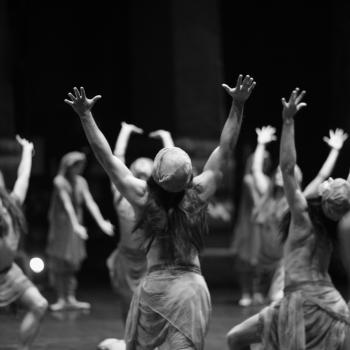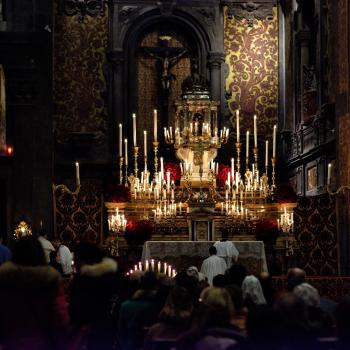Connor Wood

Do you remember what you were doing when you heard about the terrorist attacks in New York and Washington, D.C., on September 11, 2001? How about the details of the pastor’s outfit at your wedding? Memory is powerfully affected by the contexts and circumstances within which we form our memories, but perhaps nowhere is this more true than in the rites and rituals that undergird religion. István Czachesz, a researcher the University of Helsinki, Finland, thinks that affecting memory may be among the most important functions of religious rituals.

Writing in the Journal of Cognition and Culture, Czachesz recently built on research in sociology, psychology, and the cognitive sciences to strongly suggest that different types of rituals have different effects on memory. One theory of ritual, which Czachesz terms the “mode theory,” hypothesizes a difference between rituals that are emotionally arousing but infrequent, and those that are relatively tame but frequently repeated. Examples of the first type of ritual might be a baptism, wedding, or initiation ritual. Weekly taking of communion or daily prayer toward Mecca fit in the second category.
According to this theory, exciting, once-in-a-lifetime rituals that feature emotionally powerful images tend to generate “episodic,” or specific, memories in the minds of participants. Meanwhile, run-of-the-mill, regularly repeated rituals help people slowly build up knowledge of a tradition’s theology, mores, and mythology over time – a “semantic” type of memory.
Meanwhile, a competing system for explaining religious practices, ritual form theory, distinguishes between rituals in which a god or supernatural force is associated with the main actor and those in which the deity is more closely associated with some other feature of the ritual. In the first type, a priest or shaman might have access to supernatural powers during the ceremony, resulting in a permanent change arising from the ritual’s effects. An example might be a coming-of-age ritual. In the latter type, the supernatural power is more closely entwined with aspects of the ritual such as idols, incense, or Eucharist wafers. These rituals don’t change the participants permanently, so they need to be repeated regularly and indefinitely.
But Czachesz claims that the differences outlined in these two theories of ritual are too simplistic.
Instead, Czachesz suggests that researchers should focus on how different kinds of stimuli affect people in contrasting situations. He points out that, for example, arousing visual stimuli seem to have different effects on memory than narrative stimuli do. Specifically, if you hear about something shocking during a story, it’s likely to help you remember the whole story. But if you see something shocking during an experience, you’ll most likely remember only that thing, forgetting the rest of the context.
Stress also has different effects on memory depending on context. If someone experiences an emotionally powerful event, such as performing at Carnegie Hall, stress will probably help that person remember the event more clearly. But, in contrast, being under stress appears to hinder people’s ability to remember emotionally bland or neutral narratives and events.
Czachesz takes these findings and, combining them with recent research suggesting that people best remember things that are somehow connected with them personally, generates four hypotheses for how rituals work.
First, people are most likely to remember the emotionally powerful details of any ritual they take part in. These include, for example, stirring music during a wedding, or the bloody imagery of Christ during a passion play.
Second, emotionally arousing visual stimuli – think again about the bloody Christ – will function as “attention magnets,” prompting people to remember them at the expense of other details and the overall context of the ritual.
Third, the more a person feels him- or herself to be voluntarily participating or actively playing a major role in a ritual, the more likely that person is to remember the important aspects of the experience. Czachesz proposes that rituals in which people take active, voluntary roles are more personally meaningful and connected to the self than rituals in which people are merely observers or passive participants.
Finally, stress works to “zoom” people’s focus in on emotionally important details of a ritual. Less-arousing aspects that might be remembered when people are feeling their best are progressively ignored, as people’s minds concentrate their resources on the details that seem most personally relevant.
These hypotheses suggest that different types of rituals are useful for different purposes. For example, if the point of a ritual is to leave people with emotionally powerful, mythologically meaningful imagery, a stressful ritual with lots of visual stimulation might work best. But if the purpose is to help people remember specific theological and mythological knowledge, rituals that avoid stirring visual imagery and instead focus on reinforcing participants’ personal connection with the narratives and claims of the tradition would be expected.
Czachesz’s paper only makes hypotheses; it doesn’t prove them. He’s hoping his postulations provide an interesting direction for future research. For interested outsiders, his proposals point at new ways of thinking about how and why human cultures produce rituals. Memorizing the important features of a cultural tradition – both intellectual and emotional – is a vital part of being a socially functioning human being. Using the right rituals for the right circumstances may be one of the central unacknowledged tasks of religious traditions worldwide.











